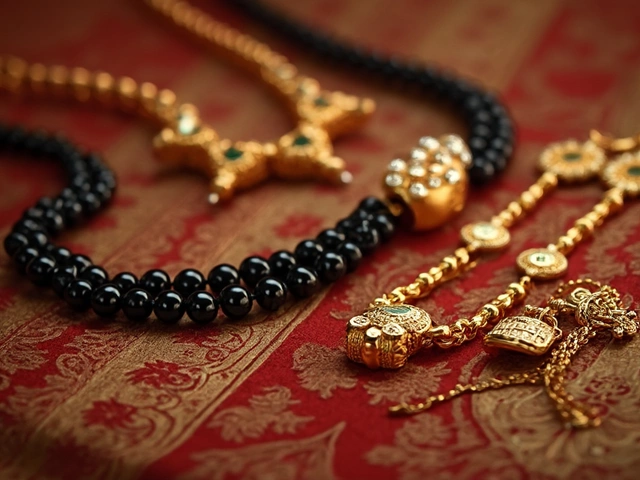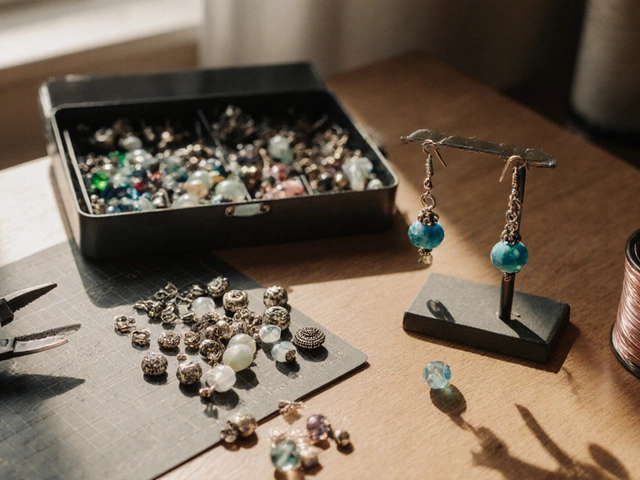Cultural Compatibility Checker
Cultural Compatibility Checker
Determine if wearing gold toe rings aligns with your cultural background, marital status, and health needs based on traditional Indian customs and modern considerations.
Answer these questions:
Enter your details above to see compatibility results.
Gold toe rings aren’t just pretty accessories-they carry centuries of meaning, especially in South Asia. But if you’re wondering who can wear them today, the answer isn’t as simple as ‘anyone.’ While modern fashion has opened the door for global styles, the cultural roots of gold toe rings still shape who wears them, why, and how.
Tradition Says: Married Women in India Wear Gold Toe Rings
In India, gold toe rings-called metti in Tamil, bichiya in Hindi, or alata in Bengali-are deeply tied to marriage. For generations, Hindu women have worn them on the second toe of both feet as a symbol of marital status. It’s not a fashion choice; it’s a ritual. The ring is usually worn alongside the mangalsutra and bangles, forming part of the sacred trinity of married women’s jewelry.
Why the second toe? Ancient Ayurvedic beliefs say pressure on this toe stimulates nerves connected to the uterus and reproductive system. Wearing gold, a conductive metal, is thought to help regulate menstrual cycles and improve fertility. While modern science hasn’t proven this, the tradition remains strong in rural areas and conservative families. Even today, many brides have their toe rings fitted during the wedding ceremony, often by the mother-in-law.
It’s Not Just About Marriage Anymore
Times have changed. In cities like Mumbai, Delhi, and Bangalore, young women-married or not-are wearing gold toe rings purely for style. Designers now make delicate gold bands with tiny gemstones, minimalist hoops, and even engraved patterns. You’ll see them paired with sandals, barefoot at beach parties, or even with jeans and sneakers.
Global influencers and Bollywood stars have helped normalize toe rings beyond tradition. Actresses like Deepika Padukone and Alia Bhatt have been spotted wearing them on red carpets and in casual shoots. Social media hashtags like #ToeRingStyle and #GoldToeRing have over 2 million posts on Instagram. This isn’t cultural appropriation-it’s evolution.
Who Shouldn’t Wear Gold Toe Rings?
Just because you can wear them doesn’t mean you should-especially if you’re unaware of the context. In some orthodox Hindu households, a single woman wearing a gold toe ring might be seen as disrespectful or misleading. It’s not about rules written in stone, but about sensitivity to family values.
Also, avoid wearing them if you have diabetes or poor circulation. Tight jewelry on the feet can restrict blood flow, and reduced sensation in the toes can lead to unnoticed injuries. If you’re diabetic or elderly, opt for open designs or skip toe rings altogether.
Some Muslim and Christian communities in India don’t have a tradition of toe rings. While there’s no religious prohibition, wearing them might raise questions in conservative circles. It’s worth considering your social environment before making a statement with your jewelry.

Gold vs. Silver: Why Gold Matters
You’ll notice most traditional toe rings are made of gold, not silver. That’s intentional. Gold is considered pure and auspicious in Hindu culture. Silver is often worn by unmarried girls or for decorative purposes, but gold carries the weight of ritual.
Gold also doesn’t tarnish. A silver toe ring can turn black from sweat and moisture, especially in humid climates like Mumbai. Gold stays bright, making it ideal for lifelong wear. Many families pass down gold toe rings as heirlooms-sometimes from grandmother to daughter-in-law.
Modern gold toe rings are often made with 22k or 24k gold. But for daily wear, 18k is better-it’s durable enough to handle friction from shoes and walking. If you’re buying online, check the hallmark. A BIS 916 stamp means it’s 91.6% pure gold.
How to Wear Them Right
Wearing a gold toe ring isn’t like slipping on a ring on your finger. Toes swell, sweat, and move differently. Here’s how to get it right:
- Measure your second toe at the end of the day-when it’s slightly swollen-for the best fit.
- Choose a ring with a slight gap or hinge. Rigid bands can break or pinch.
- Wear them barefoot or with open-toed shoes. Closed shoes create pressure and friction.
- Remove them before bathing or swimming. Soap and chlorine can dull the gold over time.
- Clean weekly with mild soap and a soft brush. Avoid ultrasonic cleaners-they can loosen settings.
Most Indian jewelers offer free resizing. If you buy from a local artisan, ask them to file the inner edge smooth. A rough edge can rub against your skin and cause irritation.
Global Trends: Toe Rings Outside India
In the U.S., Europe, and Australia, toe rings are mostly seen as boho-chic accessories. They’re often made of silver, copper, or even plastic. You’ll find them in beach towns, music festivals, and yoga studios. But here’s the difference: they’re rarely gold, and never carry cultural meaning.
Some Western designers now make gold toe rings inspired by Indian styles-but they’re marketed as ‘ethnic’ or ‘boho’ fashion, not as marital symbols. That’s fine. But if you’re wearing one in a setting where Indian traditions are respected, know the difference.

Can Men Wear Gold Toe Rings?
Traditionally, no. In Indian culture, toe rings are exclusively worn by women. Men wear gold rings on fingers, but not toes. There are no ancient texts or rituals that support men wearing them.
Modern fashion doesn’t have hard rules. Some men in urban areas wear them as a style statement. But be prepared for stares, questions, or even criticism from older relatives. It’s not illegal or wrong-but it’s not culturally accepted either.
When to Skip Gold Toe Rings
There are times when wearing them isn’t practical-or wise:
- If you work in healthcare, food service, or construction-hygiene and safety rules often ban toe jewelry.
- If you’re traveling to conservative regions in India, like rural Uttar Pradesh or Bihar-wearing one as a single woman might attract unwanted attention.
- If you’re pregnant and your feet are swelling-tight rings can become painful or dangerous.
- If you’re allergic to gold alloys-check for nickel content. Hypoallergenic gold (like 22k) is safer.
When in doubt, ask. Talk to your mother, grandmother, or a local jeweler who knows the tradition. It’s not about following rules blindly-it’s about understanding the story behind the ring.
Final Thought: Respect the Symbol, Choose the Style
Gold toe rings are more than metal. They’re memory, identity, and heritage. For many women, they’re a quiet reminder of love, family, and continuity. For others, they’re a spark of personal expression.
You don’t have to be married to wear one. But if you’re wearing it because it looks beautiful, wear it with awareness. Know where it comes from. Honor the roots, even as you redefine the rim.
Can unmarried women wear gold toe rings?
Traditionally, no-gold toe rings are worn by married women in Indian culture as a symbol of marital status. But today, many unmarried women wear them as fashion accessories, especially in cities. While there’s no religious rule against it, some conservative families may still view it as inappropriate. It’s a personal choice, but being aware of context helps avoid misunderstandings.
Is it okay to wear gold toe rings every day?
Yes, if they fit well and are made of pure gold (18k-22k). Daily wear is common in India, especially among married women. But avoid wearing them in closed shoes, during intense physical activity, or while swimming. Clean them weekly and remove them if your toes swell or feel numb.
Why are gold toe rings worn on the second toe?
According to Ayurveda, the second toe has a nerve connection to the uterus and reproductive organs. Wearing a ring here is believed to help regulate menstrual cycles and improve fertility. Gold, being a good conductor, is thought to enhance this effect. While science hasn’t confirmed this, the tradition persists because of cultural belief, not just anatomy.
Can men wear gold toe rings in India?
Traditionally, no. Indian culture doesn’t have any ritual or custom of men wearing toe rings. Gold toe rings are exclusively associated with women, especially married women. While some modern men wear them as fashion, it’s uncommon and may be seen as unusual or disrespectful in traditional settings.
What’s the difference between gold and silver toe rings?
Gold toe rings are worn by married women in Indian culture and carry symbolic meaning. Silver toe rings are often worn by unmarried girls or as decorative pieces. Gold doesn’t tarnish, lasts longer, and is considered auspicious. Silver is cheaper and more common in global fashion, but lacks the cultural weight of gold in traditional contexts.



